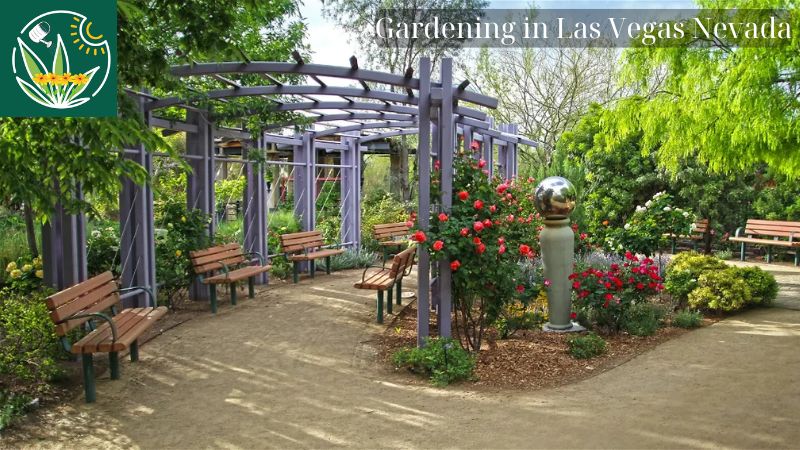Gardening in Las Vegas Nevada, presents a unique and exciting challenge for nature enthusiasts. Nestled in the heart of the Mojave Desert, this vibrant city is known for its extreme heat, arid climate, and limited rainfall. Yet, beneath the harsh conditions lies the opportunity to cultivate beautiful and thriving gardens that harmonize with the desert landscape.
With a careful selection of drought-tolerant plants, smart irrigation techniques, and a deeper understanding of the local environment, anyone can transform their outdoor space into a flourishing oasis. Let tree02.com introduce you to gardening in Las Vegas Nevada.
Introduce of gardening in las vegas nevada
Gardening in Las Vegas, Nevada, might seem daunting at first due to the city’s harsh desert environment, characterized by high temperatures, dry air, and limited rainfall. However, with the right knowledge and preparation, you can successfully cultivate a thriving garden in this arid region. Las Vegas, located in the Mojave Desert, experiences extreme heat during the summer, with temperatures often exceeding 100°F, and relatively mild winters. Despite these challenging conditions, many plants, especially desert-adapted species, can flourish when given the proper care.
For those new to gardening in Las Vegas, understanding the area’s unique climate, soil composition, and water management strategies is essential. The key to success lies in choosing the right plants that can withstand intense sunlight, adjusting irrigation practices to minimize water waste, and enhancing the soil to provide sufficient nutrients for plant growth. Whether you’re growing vegetables, ornamental plants, or succulents, a desert garden in Las Vegas can be both beautiful and productive.
With a bit of planning and the right techniques, gardening in Las Vegas is not only possible but can also be a rewarding and sustainable way to enjoy the beauty of nature in the desert.

How to Garden in a Desert City?
Gardening in Las Vegas, a city known for its harsh desert climate, can seem like a challenge. However, if you have the right knowledge and understanding of how to handle the conditions, growing plants in a desert city is not that difficult. Here is a detailed guide on how to garden in Las Vegas and important tips for a successful garden.
Plant Care in Las Vegas
In a desert environment like Las Vegas, three important factors to pay attention to are: soil preparation, proper watering, and pest control. The dry climate and extreme temperatures here require gardeners to take special care to ensure that their plants can thrive.
Preparing the Soil for Planting: The soil in Las Vegas is hard, rocky, and does not retain water or nutrients well, making it difficult to grow plants. Before you start planting, you’ll need to improve your soil by adding compost or other soil amendments to help retain water and provide essential nutrients. For succulents and cacti, well-draining soil is needed, but for vegetables, you’ll need more nutrient-rich soil.
Determine your zone: Las Vegas is in USDA plant hardiness zone 9a and Sunset zone 11. This classification helps determine which plants will thrive in these climates. When purchasing plants or seeds, check the zone to choose plants that are suitable for Las Vegas’ climate. If you want to grow plants outside the recommended zone, be prepared to take protective measures such as placing them in a greenhouse or shielding them from harsh sunlight.
Adjust Sunlight
While many plants need full sun (6-8 hours a day), the intense Las Vegas sun can burn plants that are not desert plants. Therefore, even plants that need full sun need some shade during the midday sun when the sun is at its strongest. When planting a desert garden, position your plants so that they get shade around 2pm to avoid wilting or leaf burn.
Watering Properly
One of the biggest challenges of gardening in Las Vegas is watering. The dry climate causes water to evaporate quickly, and improper watering can waste precious water resources. Drip irrigation is the most effective method to ensure that plants get enough water without losing too much to evaporation. Water your plants early in the morning and avoid watering at noon when the temperature is highest. In particular, in the winter, limit watering in the evening to avoid damaging your plants.
Use Mulch
Mulch plays an important role in retaining moisture in the soil and preventing weeds. By adding a layer of organic material to the soil surface, you not only help retain water in the soil longer, but you also prevent weeds from growing. This is especially important in desert areas where water is a precious commodity.
Prepare for pests
Despite the dry climate, gardens in Las Vegas can still be attacked by a variety of pests. Some common insects such as ants, spider mites, and beetles can damage plants. To effectively control pests, you can use natural remedies such as ladybugs or specialized insecticides for each type of pest.
Plant at the right time
Las Vegas has two main growing seasons: the cool season (February – March and August – September) and the warm season (March – June). Each type of plant has its own preferred time to plant, so you should follow a planting schedule to ensure that your plants grow best. For example, in the cooler months, you can plant vegetables like broccoli, cauliflower, and Brussels sprouts. Meanwhile, in the warmer months, fruits and vegetables like tomatoes, cucumbers, and peppers thrive.
Understanding Cacti and Succulents
Cacti and succulents are two common types of plants found in the desert. However, they have a slight difference. Cacti do well in dry, sunny climates, while succulents tend to grow better in more humid environments. However, both types of plants have very low watering needs and should be avoided during the cold months when the plants are dormant.
Conclusion
Gardening in Las Vegas can require some special adaptations to the desert conditions, but once you master the basics, planting and maintaining a vegetable garden here becomes easier. From choosing the right plants, adjusting sunlight, watering properly, to controlling pests, all are important factors in having a thriving garden even in the harsh environment of Las Vegas.






